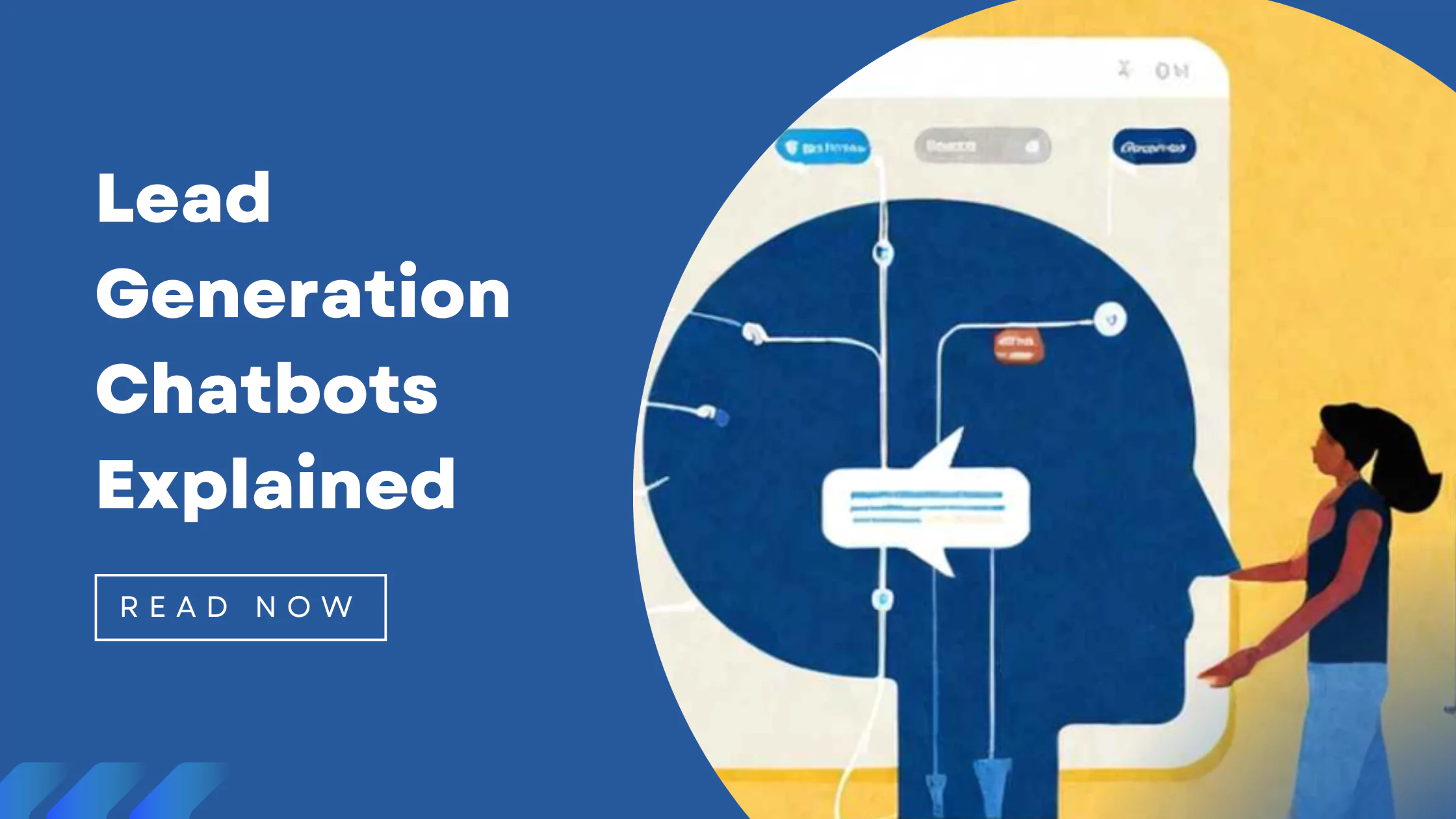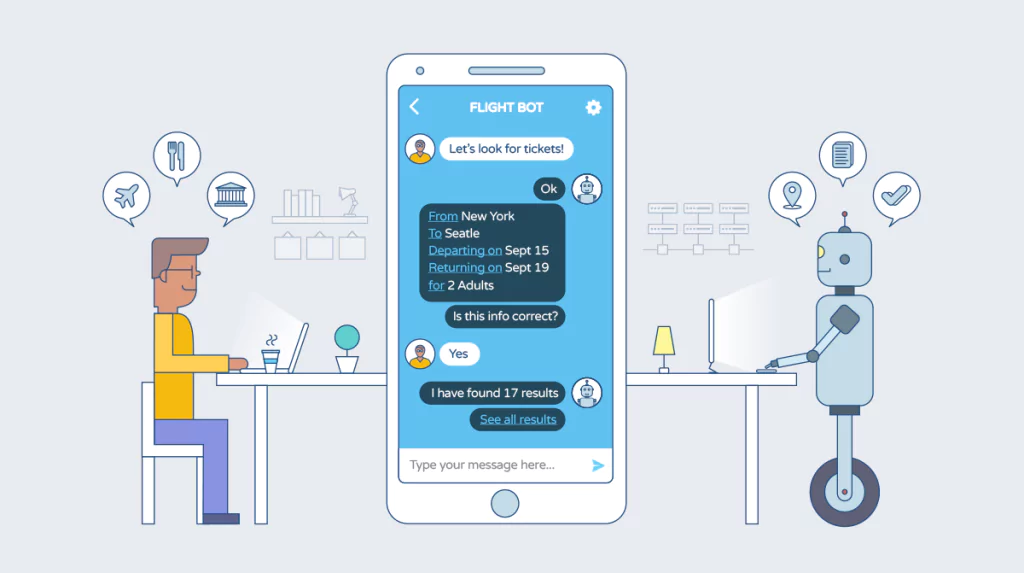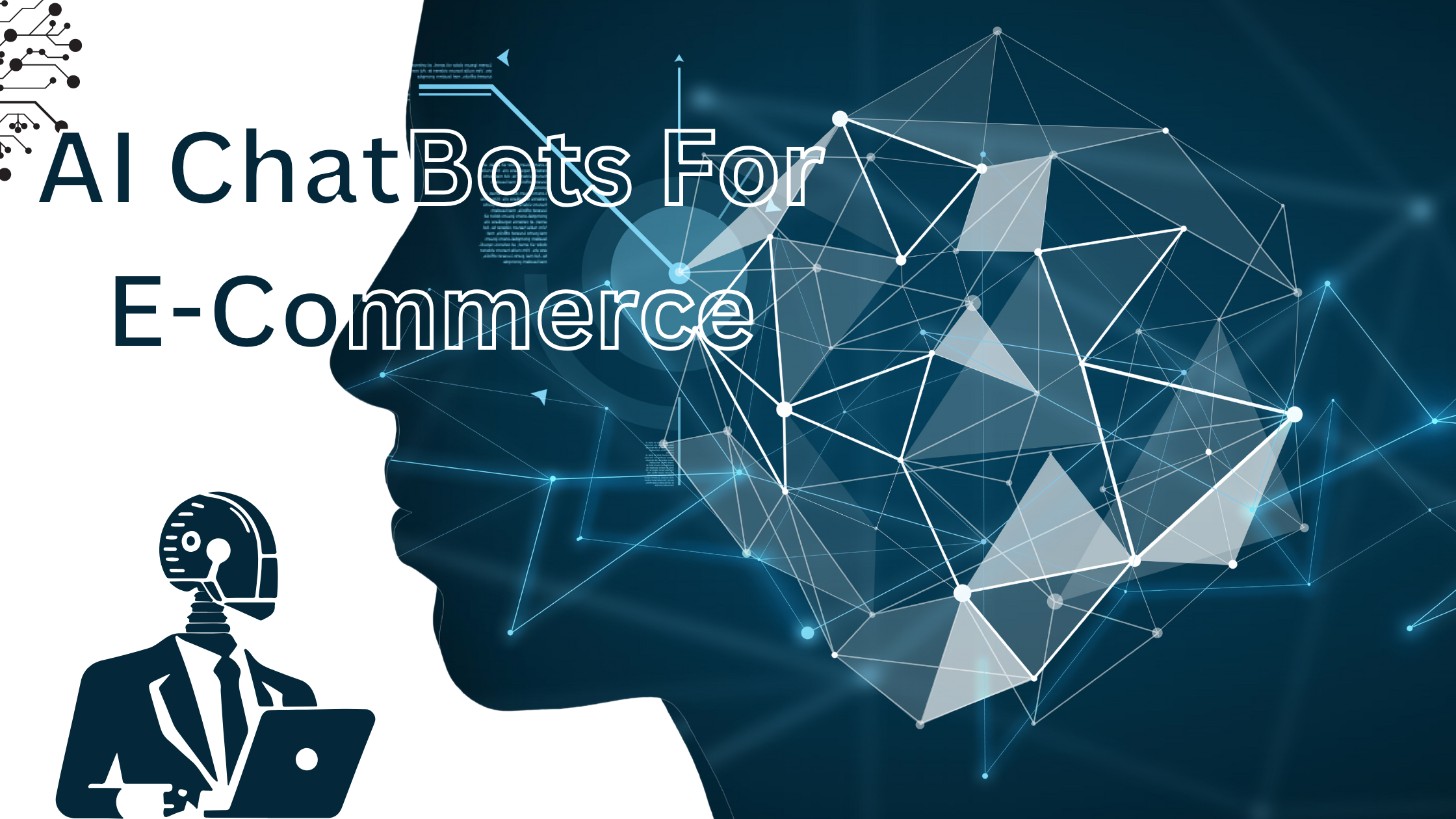Imagine you own an online store. You have a hardworking assistant named Ava. She works non-stop, around the clock, and she’s always there, day and night, ready to chat with everyone who visits your site.
But wait, does that sound right? Doesn’t Ava have a life or hobbies?
Well, here’s the thing. Ava isn’t a human assistant—she’s a lead generation chatbot.
The way she operates will transform how you think about customer engagement and sales.
In this blog, we’ll explain what a lead generation chatbot is, show you real-life examples, and explore different types of lead generation chatbots.
What Exactly Does Ava Do?
To understand the importance of what Ava does, let’s first define what a “lead” is.
A lead is a visitor with the potential to become a customer in the future. This visitor has shown interest in your company through actions such as signing up for the newsletter, filling out surveys, and contacting your chatbot.
However, these visitors are not customers yet because they might not have confidence in your product. Or they might not know enough about it or could be considering their options. So, how can you tell who’s a lead and who isn’t? By asking the right questions and evaluating their answers.
In this context, Ava, like any lead generation chatbot, is here to collect information on these leads. With this information, your sales team can contact these visitors and provide further assistance until they become customers.
You might wonder, does all Ava do is ask questions and answer?
Not really. Modern lead generation chatbots, like Ava, come packed with advanced features. For instance, they integrate effortlessly with your existing data systems. Ava connects directly to CRM platforms and marketing tools, making sure all the information is shared smoothly, without any interruptions.
Introduction to Lead Generation Chatbots
Lead generation chatbots like Ava are smart tools that actively start conversations with site visitors. They ask questions to gather details like names, emails, or preferences, and assess whether someone like Mark or Sarah could turn into a valuable customer—all through automated chats.
The difference between a typical chatbot and a lead generation chatbot is that lead generation chatbots take the initiative to start conversations.
Lead generation chatbots use pre-set triggers, visitor data, and behavior tracking to achieve this.
But they don’t just stop there. They also qualify leads by asking relevant questions, integrate with CRM systems for seamless data flow, and provide personalized follow-up suggestions based on the gathered information.
Lead Generation Chatbots vs. Other Types of Chatbots
Chatbots are there to chat, as the name suggests.
While many of these regular chatbots handle customer service-related tasks, lead generation chatbots serve a different role. Their main job, as the name implies, is – yes, you guessed it right – to generate leads.
Here’s what else makes them special:
Proactive Engagement: Lead generation chatbots don’t wait for customers to come to them. Instead, they start conversations on their own in a non-stalkish way. As a result, every potential lead gets the attention they deserve.
Lead Scoring: What truly makes lead generation bots special happens after the initial chatting stage. Specifically, they start scoring leads based on their responses using algorithms and predefined criteria. This scoring helps businesses focus on the most promising leads, which regular “That-would-be-100$” bots can’t do.
Sales Funnel Integration: These chatbots actively participate in the sales process. They guide leads through the qualification stages, thereby turning interest into action and making the process smoother for your team.
Enhancing the Lead-Generation Process with Chatbot Integration
Adding lead-generation chatbots to your process can make it a lot more effective.
How effective?
For starters, they can reach out when someone lingers on a page or abandons a cart. These nudges can turn interest into action.
Beyond that, if a chatbot notices a visitor who often returns to your site, it can offer personalized discounts or promotions. This helps turn hesitant leads into paying customers.
If your business serves a global audience, multilingual chatbots make everything more inclusive. They can communicate in your customers’ languages. Now, that’s impressive.
But Can Lead Generation Chatbots Improve Conversion Rates?
Lead generation chatbots are really changing the game when it comes to how businesses turn leads into real success. Their ability to respond instantly is a major plus. That ability prevents potential leads from slipping away, avoiding those frustrating delays that often kill interest.
And lead generations bots don’t stop there.
By giving immediate feedback, these chatbots not only cut down on drop-offs but also create a better overall experience. They offer help right when it’s needed, delivering useful information on the spot.
This fast interaction keeps leads hooked, which makes a huge difference in boosting conversion rates.
It starts with personalisation
At the end of the day, it’s all about conversions. It doesn’t matter if your lead-generation bot can speak French to Italians if it doesn’t translate to sales.
So, the million-dollar question is: Can lead-generation bots actually improve the conversion rate?
Yes, they can.
Their main specialty is providing help right when it’s needed and delivering useful information on the spot. But what makes them key players in growing conversions isn’t just that. It’s their ability to guide leads throughout the entire sales funnel.
The sales funnel is the journey potential customers take from first learning about your brand to making a purchase. If we can streamline each stage of this funnel, we should see conversions in no time, in theory.
Typically, the sales funnel consists of four main stages: Awareness, Interest, Decision, and Action.
Now, let’s look at each stage and see how lead-generation chatbots can help.
Stage #1: Awareness Stage
Traditional Methods: The purpose of this stage is to create awareness. In this stage, businesses often run ads, SEO, and content marketing to attract potential leads. The thing about these methods is they do not provide immediate results. You might have to wait for about 6-8 months to get some leads with SEO.
How Chatbots Help: Lead-generation chatbots reach out to your visitors proactively as they land on your site. Instead of waiting for users to find your content – like SEO or content marketing – chatbots can offer useful information right away. Lead generation answers general questions. They provide insights into your brand and guide users to relevant content. And does this all without taking a long period of time.
The result is your outreach is more interactive and immediate.
Stage #2: Interest Stage
Traditional Methods: In this stage, the goal is to generate interest. Businesses use email marketing, newsletters, or downloadable resources to nurture leads who have shown interest. These methods require manual follow-ups and often lack personalization.
How Chatbots Help: When leads show interest in the presence of a lead generation chatbot, our bots get to work. They can instantly offer tailored information on products or services, and provide detailed product demos, case studies, or customer testimonials, and more! And it’s not like lead generation chatbots are randomly providing these resources, they are doing it based on the lead’s preferences and interactions.
Stage #3: Decision Stage
Traditional Methods: The customers are looking to make a decision in this stage. Usually, they are wondering whether to make a purchase or not. Usually, businesses rely on sales reps to answer specific questions or offer comparisons through emails or phone calls. This approach can be time-consuming and may not always provide quick responses.
How Chatbots Help: When it comes to answering questions, chatbots are unparalleled. They swiftly answer specific questions, present comparisons between options, and offer special deals directly through chat. This immediate assistance helps leads make informed decisions quickly without waiting for human intervention, effectively addressing their concerns right when they need it.
Lead Qualification Process Compared to Traditional Methods
So now we know lead generation chatbots can help us with the sales funnel. And their lead generation is also great.
But what about the quality of these leads? Don’t traditional methods seem more trustworthy in qualifying these leads?
To understand how chatbots compare, let’s look at two companies: Company A with traditional methods, and Company B using AI-powered chatbots.
Company A: The Traditional Approach
Company A handles lead qualification manually. When a lead comes in, a sales representative reviews their information. This usually involves forms or direct interactions.
The human in this case assesses the lead to understand if they meet predefined criteria. After this, follow-up actions such as emails or calls are required.
However, while a human touch helps understand nuances, the drawbacks are significant. This manual approach is time-consuming and can vary in quality. Some leads might get more attention based on the representative’s workload or personal biases. Consequently, this inconsistency can lead to missed opportunities or incorrect qualification of leads.
And most importantly, keeping up with lead engagement manually is labor-intensive.
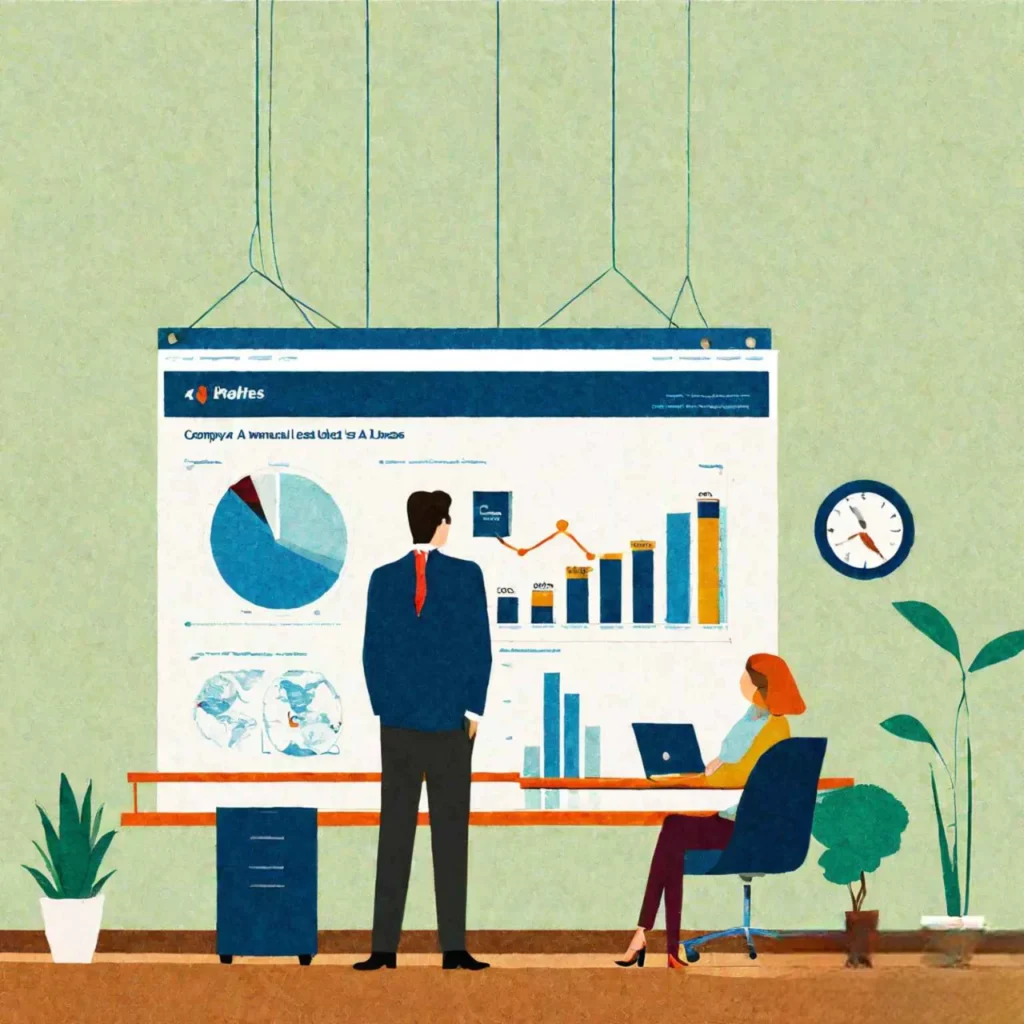

Company B: The AI-Powered Chatbot Approach
In contrast, Company B uses AI-powered chatbots for lead qualification. When a lead interacts, the chatbot immediately steps in. It evaluates the lead’s qualifications using predefined criteria and advanced AI algorithms. This automation ensures quick and consistent evaluations, avoiding the delays often seen with manual reviews.
Because the chatbot responds instantly, it collects the necessary information and keeps the interaction smooth. This prompt engagement helps maintain the lead’s interest.
Furthermore, the chatbot personalizes conversations by analyzing user data.
It adjusts responses based on individual behaviors and preferences. This customization makes each conversation more relevant. It enhances the lead’s overall experience, making the lead generation process both more engaging and efficient.
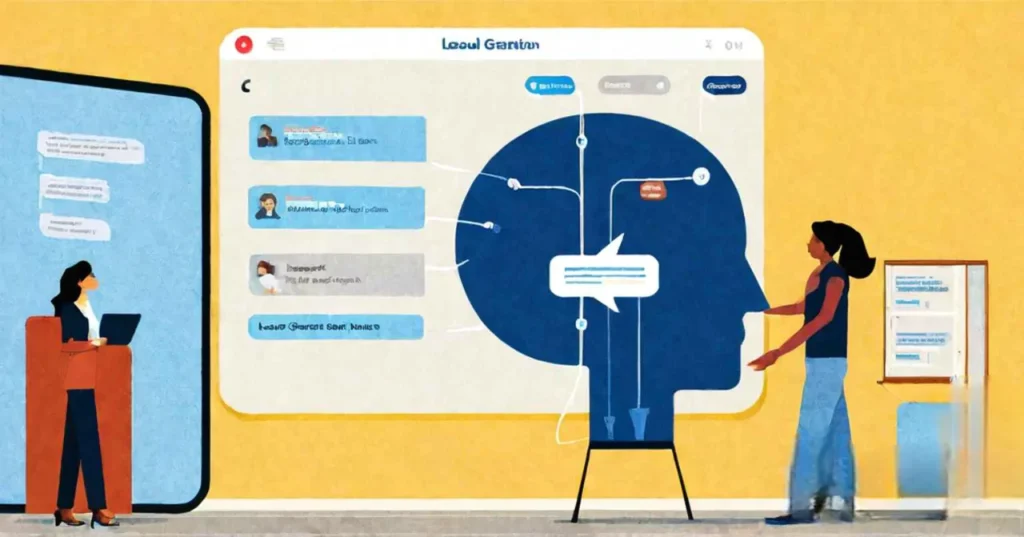
The Secret Behind Company B’s Approach
Company B’s chatbot uses Natural Language Processing (NLP) to respond accurately to user queries. This technology helps the chatbot handle complex interactions and provide relevant answers. It pulls information from an extensive knowledge base to do so.
In contrast to traditional methods, where responses can be limited or inconsistent, this chatbot delivers precise and contextually appropriate information.
AI boosts Company B’s lead generation by analyzing user data to personalize interactions. The chatbot predicts user needs based on behavior and history. It adjusts its responses in real time to fit individual requirements. Achieving this level of personalization manually is challenging and offers a more engaging experience for leads.
Now we know how effective lead generation chatbots can be. So, here’s the key question: should you build a custom chatbot or choose a pre-built one?
Choosing Between Custom and Pre-Built Chatbots
Why Go Custom?
Building a custom chatbot is like constructing a building that’s just right for your needs. Imagine designing a building where you pick everything—the layout, materials, and special features—to match your exact requirements.
Similarly, a custom chatbot gets crafted to fit your unique business processes and how you interact with customers. This approach means you can shape the chatbot’s design and functionality to blend perfectly with your current systems. Even though the upfront cost might be higher, you end up with a chatbot that’s a perfect fit for what you need, offering a significant advantage in your industry.

Why Choose Pre-Built?
In contrast, pre-built chatbots are ready-made solutions you can use right away. They come with a standard set of features that meet common business needs, making them a quick and budget-friendly choice. If you need something operational fast, a pre-built chatbot is a practical option. These chatbots are simpler to manage and update since the provider takes care of that. If extensive customization isn’t a priority for you, a pre-built chatbot offers a straightforward and efficient way to get started.
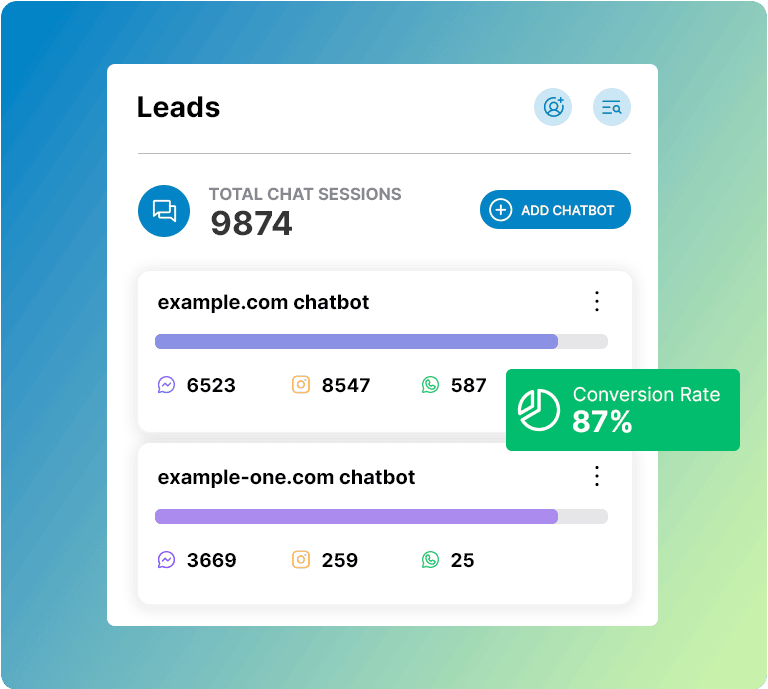
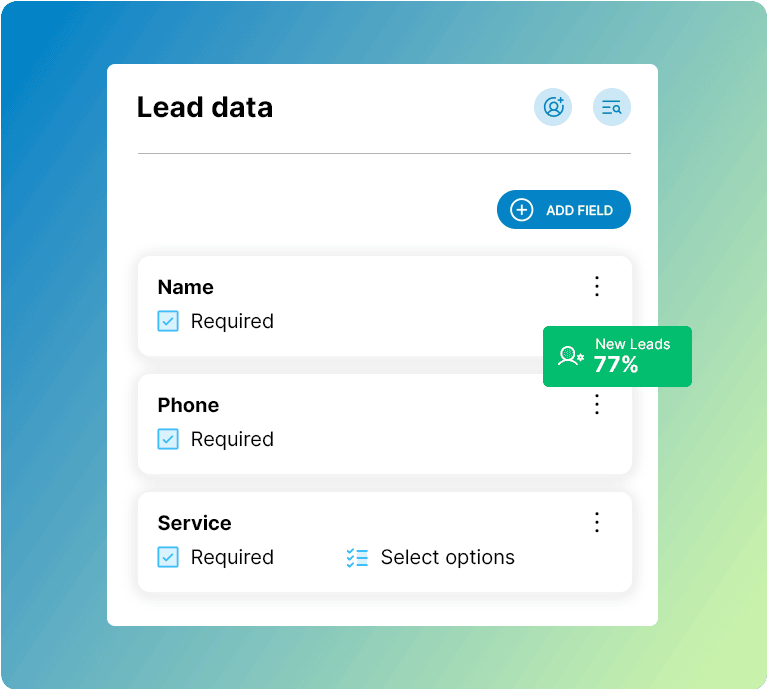
Consider these Key Factors to Decide What Suits You.
When choosing between custom and pre-built chatbots, think about these key factors:
- Business Needs: If you have unique requirements, a pre-built chatbot might not be the perfect fit. Custom chatbots can be designed to meet those specific needs precisely.
- Budget: Custom chatbots generally require a larger upfront investment. They can offer more long-term value. Pre-built chatbots cost less initially but might lack the tailored features you need.
- Timeframe: Pre-built chatbots are quick to set up. In contrast, custom chatbots take more time to develop. If you need something fast, a pre-built solution might be better.
- Scalability: Consider your business’s future growth. Pre-built chatbots may not scale as well with your expanding needs. Custom chatbots can adapt more easily as your business grows.
Measuring the Success of Lead Generation Chatbots
Measuring the success of lead generation chatbots involves tracking specific key metrics. These metrics show how well your chatbot is doing and where improvements might be needed.
Conversion Rates: This tells you what percentage of visitors interact with your chatbot and become leads or customers. A high conversion rate means the chatbot is good at engaging users and guiding them through the sales funnel.
Engagement Rates: This tracks how often visitors interact with the chatbot. A high engagement rate suggests the chatbot grabs and keeps users’ attention. If engagement is low, the chatbot might need tweaks to make interactions more engaging.
Lead Qualification Speed: This measures how quickly the chatbot assesses and qualifies leads. Faster qualification means your sales team can follow up sooner, which boosts efficiency. If lead qualification is slow, it’s time to look for ways to speed it up.
Customer Satisfaction: Measure this through feedback or follow-up surveys. High satisfaction means the chatbot meets user needs and provides a good experience. Low satisfaction indicates there’s room for improvement.
Tracking these KPIs is a starting point. To really boost your chatbot’s effectiveness, you need ongoing improvements.
Regularly review performance data to spot trends and weaknesses. This helps you adjust the chatbot’s behavior and responses.
if engagement rates drop, consider refreshing the chatbot’s conversation flow or adding new features. If lead qualification speed slows, refine the criteria the chatbot uses to assess leads. By continually improving based on insights, you enhance the chatbot’s performance and achieve better lead generation results.
Common Challenges in Implementing Lead Generation Chatbots
Implementing lead generation chatbots can be very beneficial, but it also comes with some challenges. Facing these challenges directly will help ensure smoother integration and maximize the value of your chatbot.
- Integration with Existing Systems: One major technical hurdle is integrating the chatbot with your current systems, like Customer Relationship Management (CRM) platforms, marketing tools, and databases. It’s crucial that the chatbot communicates well with these systems to manage leads and keep data consistent. You might need custom development, API integrations, or close work with technology providers to make sure everything works together properly.
- Data Security Concerns: Chatbots handle user interactions and collect sensitive information, making data security a top priority. Your chatbot must comply with data protection regulations such as GDPR or CCPA. This involves using strong encryption, secure data storage, and regular security audits to safeguard customer information from breaches or unauthorized access.
- Maintaining Chatbot Accuracy Over Time: A chatbot’s performance can drop if it’s not updated and maintained regularly. As your business changes, your chatbot’s responses, data sources, and conversational skills need to evolve too. Regular updates, ongoing training with machine learning models, and monitoring for errors or outdated information are necessary to keep the chatbot accurate and effective.
Lead Generation Chatbot Examples: Real-World Applications
Lead generation chatbots are super useful in different fields:
- Real Estate: They chat with potential buyers right away, finding out what kinds of properties they’re interested in.
- Education: They help attract students by sharing details about courses and programs.
- Travel and Hospitality: They make booking trips easier and give personalized travel suggestions.
- Retail: They boost customer engagement with tailored offers and promotions.
To give you a clearer picture of how lead generation chatbots can be applied, let’s explore a few examples:
- Voiceflow’s Tico: Tico is a chatbot designed to streamline customer service and lead generation. It helps users navigate through services, schedule appointments, and gather essential information to qualify leads effectively.
- Sephora’s Reservation Assistant: This chatbot assists customers in booking appointments at Sephora stores. It handles inquiries about available slots, products, and services, while also gathering user preferences to tailor recommendations.
- HealthTap’s Dr. A.I.: Dr. A.I. is a health-focused chatbot that provides medical advice and symptom assessments. It gathers information about symptoms, offers potential diagnoses, and connects users with healthcare professionals when needed.
- Amtrak’s Julie: Julie is Amtrak’s chatbot for customer service and lead generation. It helps users book tickets, provides travel information, and answers queries about services, all while collecting valuable lead information.
Conclusion
Lead generation chatbots are transformative tools that significantly enhance how businesses interact with potential customers and manage leads. These chatbots offer more than just automated responses; they provide a streamlined approach to capturing, qualifying, and converting leads, which is crucial for improving overall sales performance.
By automating initial interactions, chatbots like Ava ensure that no potential lead is overlooked, continuously engaging visitors and collecting valuable information. Their ability to integrate seamlessly with existing systems, such as CRM platforms and marketing tools, creates a unified system that boosts efficiency and effectiveness.
Whether you choose a custom chatbot tailored specifically to your business needs or a pre-built solution that offers quick deployment and cost-effectiveness, the key is to harness the strengths of lead generation chatbots to optimize your sales funnel. As technology advances, the capabilities of these chatbots will continue to grow, making them an essential component of modern lead generation strategies.
In the end, investing in a lead generation chatbot is an investment in enhanced customer engagement, improved conversion rates, and more efficient lead management. Embracing these technologies will not only streamline your processes but also position your business for greater success in a competitive market.
Ready to take your lead generation to the next level? Explore our advanced chatbots and discover how they can transform your sales funnel.
